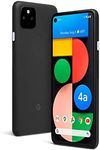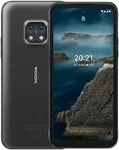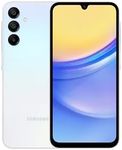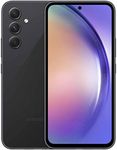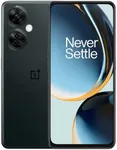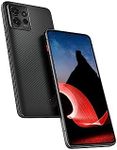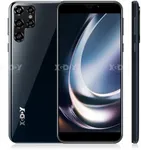Buying Guide for the Best Mid Range Android Smartphone
Choosing a mid-range Android smartphone can be a rewarding experience if you know what to look for. Mid-range phones offer a balance between performance and price, providing many features found in high-end models without the hefty price tag. To make the best choice, consider your personal needs and preferences, and pay attention to key specifications that will impact your daily use. Here are some important specs to consider when selecting a mid-range Android smartphone.DisplayThe display is the screen of your smartphone, and it's important because it's what you'll be looking at and interacting with most of the time. Mid-range phones typically offer displays ranging from HD to Full HD+ resolutions. HD (720p) is sufficient for basic use, but Full HD+ (1080p) provides sharper and more detailed visuals, which is better for watching videos, playing games, and browsing. Consider a larger screen size if you enjoy media consumption, but ensure it's comfortable to hold and use.
ProcessorThe processor, or CPU, is the brain of your smartphone, determining how fast and efficiently it can run apps and perform tasks. Mid-range phones usually come with processors from brands like Qualcomm Snapdragon or MediaTek. Look for models with at least Snapdragon 600 series or MediaTek Helio P series for decent performance. If you plan to use your phone for gaming or multitasking, opt for higher series like Snapdragon 700 or MediaTek Dimensity. Your choice should align with your usage patterns; more demanding tasks require a more powerful processor.
RAMRAM (Random Access Memory) affects how well your smartphone can handle multiple apps running simultaneously. Mid-range smartphones typically offer between 4GB to 8GB of RAM. For basic usage like social media, browsing, and light apps, 4GB is usually sufficient. If you frequently multitask or use more demanding apps, consider 6GB or 8GB for smoother performance. More RAM helps in keeping your phone responsive and efficient.
StorageStorage is where your phone keeps all your apps, photos, videos, and other data. Mid-range phones generally offer internal storage options ranging from 64GB to 128GB. If you store a lot of media files or apps, opt for higher storage capacity. Some phones also support expandable storage via microSD cards, which can be a cost-effective way to increase storage. Choose based on your data needs; more storage means more space for your files without worrying about running out.
CameraThe camera quality is crucial if you enjoy taking photos and videos. Mid-range smartphones often come with multiple cameras, including wide-angle, macro, and depth sensors. Look for phones with at least a 12MP main camera for decent photo quality. Higher megapixels (16MP or 48MP) can offer better detail, but other factors like aperture size and software optimization also play a role. Consider your photography needs; if you love capturing moments, prioritize better camera specs.
Battery LifeBattery life determines how long your phone can last on a single charge. Mid-range phones typically have battery capacities between 3000mAh to 5000mAh. A higher capacity means longer usage time, which is important if you're often away from a charger. Look for phones with at least 4000mAh for all-day use. Additionally, consider fast charging capabilities, which can quickly recharge your phone when needed. Your choice should reflect your daily usage patterns; more active users need longer battery life.
Operating System and UpdatesThe operating system (OS) is the software that runs your phone, and regular updates ensure it stays secure and performs well. Mid-range Android phones usually come with the latest version of Android, but check the manufacturer's track record for providing updates. Some brands are better at delivering timely updates than others. Choose a phone from a manufacturer known for good update support to ensure your device remains up-to-date and secure.
Build Quality and DesignBuild quality and design affect the durability and aesthetic appeal of your smartphone. Mid-range phones can have plastic, glass, or metal bodies. Plastic is lightweight and durable, while glass and metal offer a premium feel but can be more fragile. Consider how the phone feels in your hand and its overall design. If you value aesthetics and durability, opt for better build materials. Your choice should reflect your preference for style and how you plan to use the phone.
ConnectivityConnectivity features like 4G/5G, Wi-Fi, Bluetooth, and NFC determine how well your phone can connect to networks and other devices. Mid-range phones now often support 5G, which offers faster internet speeds. Ensure the phone has the connectivity options you need, such as NFC for contactless payments or Bluetooth for wireless accessories. Choose based on your connectivity needs; if you rely on fast internet and modern features, prioritize phones with comprehensive connectivity options.

